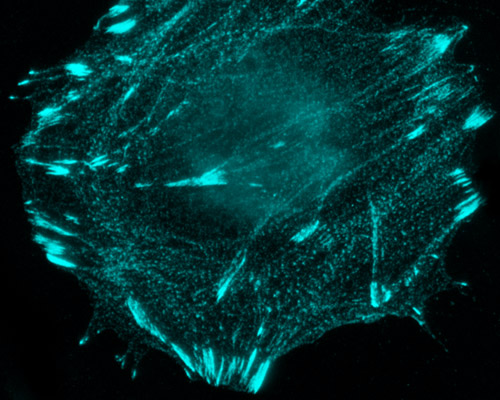mTurquoise Fused to Mouse VASP

Random and site-directed mutagenesis has resulted in the production of a high-performance cyan fluorescent protein known as mTurquoise that has spectral properties similar to ECFP and mCerulean. mTurquoise fused to mouse vasodilator-stimulated phosphoprotein (VASP) localizes to focal adhesions and, to a lesser extent, filamentous actin, as can be observed in the digital image above. VASP is a member of the Ena-VASP family of proteins, which contain an EHV1 N-terminal domain that targets them to focal adhesions and a C-terminal EVH2 domain that binds actin. VASP is thought to play an important role in the adhesion and motility of cells.



